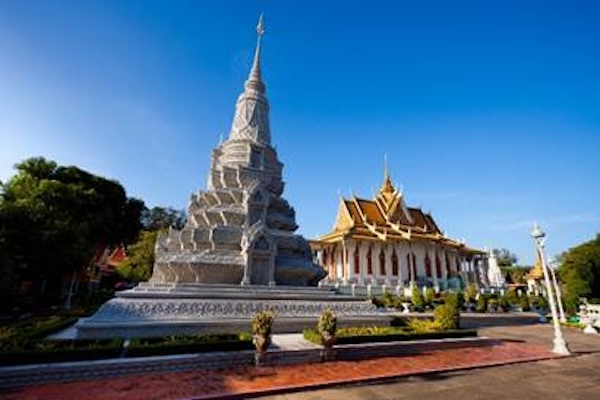Emirates has announced the revival of its Phnom Penh route, suspended due to Covid-19. This major development is set for May 1st, linking Dubai to Cambodia’s capital via Singapore.
The reintroduced route is part of Emirates’ strategy to expand its Southeast Asian network. The carrier will operate with a Boeing 777-300ER, enhancing connectivity and offering various class options.
Resumption of Service
Emirates has announced the recommencement of its route to Cambodia, a service that was suspended in March 2020 due to the Covid-19 pandemic. The route will officially reopen on May 1st, with flights operating daily from Dubai to Phnom Penh via Singapore. This strategic decision reflects Emirates’ ongoing commitment to expand its network within Southeast Asia. The timing of flights is designed to provide optimal connectivity to travelers coming from multiple locations across Europe, especially the UK.
The reintroduction of this route is expected to facilitate not only tourism but also bolster business and trade connections between Cambodia and the wider world. Flights to Singapore will be increased to four times daily, further enhancing connectivity in the region. The services will be operated by the Boeing 777-300ER, which offers a range of seating classes, including eight First Class private suites, ensuring passenger comfort and choice.
Strategic Importance
The resumption is part of a broader strategy by Emirates to enhance its Southeast Asian presence. The route is not only vital for tourism but plays a significant role in commerce. Southeast Asia, with its rich cultural heritage and booming economies, presents a significant market opportunity for international airlines.
By reinstating the Phnom Penh route, Emirates aims to strengthen its competitive edge, offering unrivaled service quality and connectivity. Chief commercial officer Adnan Kazim stated, “The resumption of our Phnom Penh services demonstrates our commitment to strengthening our Southeast Asian network.” This move is seen as a testament to Emirates’ dedication to supporting regional economies through increased access and mobility.
Operational Details
Emirates is well-regarded for its premium offerings, and the Phnom Penh route is no exception. The aircraft assigned to this route, the Boeing 777-300ER, is equipped to deliver a top-tier flying experience.
The aircraft’s configuration includes First Class private suites for luxury travelers, lie-flat seats in Business Class, and comfortable Economy seating, catering to a broad spectrum of passenger preferences. This setup ensures that Emirates caters to diverse customer needs, enhancing its reputation as an airline that prioritizes both luxury and practicality.
Expanding the frequency of flights to Singapore creates additional connection points for travelers. This enhances Emirates’ ability to offer flexible travel options, making it easier for customers to plan their journeys. Increased frequency also indicates Emirates’ confidence in demand rebound for air travel in and out of Southeast Asia post-pandemic.
Industry Impact
The revival of the Phnom Penh route by Emirates is poised to have a ripple effect across the aviation industry. It signals a phase of recovery and growth, as airlines adapt to the new normal and seek to recapture pre-pandemic passenger volumes.
Competing airlines may also consider revisiting their strategies in response to Emirates’ expansion, particularly those with interests in Southeast Asia. This move could stimulate competitive pricing, improved services, and innovative route planning within the sector. By optimising routes and expanding offerings, airlines are likely to enhance their market presence and profitability.
The strategy is aligned with the current trends where airlines are focused on building resilience and agility into their operations. The increased connectivity facilitated by Emirates is anticipated to stimulate economic activities, encouraging travel and trade across borders.
Challenges and Prospects
Despite the positive outlook, the aviation industry still faces challenges as it recovers from the pandemic’s disruptions. Airlines must navigate fluctuating travel restrictions, emerging Covid-19 variants, and shifts in consumer behaviour.
Nevertheless, Emirates appears to be well-positioned to leverage these challenges as opportunities. The airline is focused on maintaining rigorous health and safety standards to ensure passenger confidence. In enhancing its Southeast Asia routes, Emirates demonstrates its resilience and strategic foresight, positioning itself for long-term success.
By reinstating the Phnom Penh service, Emirates is betting on a rebound in travel demand. The airline’s strategy includes expanding its network reach while ensuring high-quality service to attract both leisure and business travelers.
Customer Experience
For Emirates passengers, the revival of the Phnom Penh route brings enhanced travel opportunities. The airline’s commitment to providing superior service is evident in its detailed planning and execution of routes.
With the option of connecting through Singapore, passengers can enjoy a stopover in one of Asia’s most vibrant cities, enhancing their travel experience. The airline’s diverse passenger offerings ensure that travelers of all types can find suitable options for their journey.
Emirates’ service on this route emphasizes comfort, convenience, and a seamless travel experience. With competitive pricing and various seating options, the airline positions itself as a leader in customer satisfaction within the region.
Regional Economic Benefits
The resumption of this route is expected to stimulate economic activities in Cambodia, promoting tourism, business, and international trade.
As connectivity improves, Cambodia can anticipate a surge in foreign investment and tourism, contributing to local economic growth. The route re-opening underlines the importance of air travel in fostering international relationships and economic exchanges.
Emirates’ reinstatement of the Phnom Penh route signifies recovery and expansion in air travel. It highlights the airline’s resilience and strategic planning in reconnecting vital networks.
The airline’s focus on enhanced connectivity aligns with global travel trends, supporting economic growth through increased tourism and business links.

